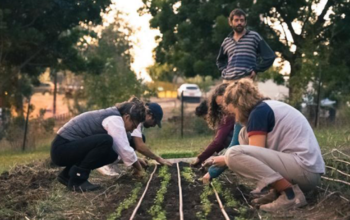Disclosure: As an Amazon Associate I earn from qualifying purchases. This page may contain affiliate links, which means I may receive a commission if you click a link and purchase something that I have recommended. There is no additional cost to you whatsoever.
If you dig a little into the history of the modern environmental movement, it’s not long until you find white supremacy at its foundations. Folks such as John Muir, founder of the oldest and largest US conservation organisation the Sierra Club, held racist beliefs that excluded Native Americans and Black people. Others, like naturalist John James Audubon, were slaveholders who ignored the contributions of enslaved Black people and the Indigenous in conservation work.
Even today local and indigenous communities are still excluded from the environmental narrative and decision-making. In the West, the organised environmental movement is seen as a typically white middle-class space with people of color less visible and migrants portrayed as indifferent and apathetic to the environment.
The findings of a recent study by a team of researchers from Western Sydney University led by Dr Sukhmani Khorana and Claudia Sirdah show that migrants do practice environmental care, usually on the home front, though many do not adopt mainstream environmental terminology to frame their actions.

With that being said, here are seven ways that migrants practice environmentalism and sustainable living:
1. Practicing frugality
Many first and second-generation migrants, particularly those who are from developing countries and have experienced economic and political hardships, have often grown up in a culture of thriftiness. As they have no financial safety nets, they generally do not squander their financial resources. As such, they adopt a frugal mindset and are careful with how they spend their hard-earned money. This means that migrants are more likely to repair something when it’s broken, mend holes in clothing, cook most meals at home and are less tolerant of food waste.
Related Post: Affluence is Killing the Planet, Warn Scientists
2. Recycling and repurposing
In addition to repairing items, migrants will often recycle and repurpose goods in order to make the most of the items in their possession. Migrants are less likely to throw things away and will find ways to repurpose goods, whether that’s making cloth rags from an old t-shirt or making plant pots from old plastic bottles.
3. Careful water and electricity use
As already outlined, many migrants adopt a frugal mindset and another way this manifests in the domestic front is their careful use of water and electricity. Turning off appliances at the socket and lights when not in use, choosing extra blankets over central heating and using buckets in the shower to capture excess water that can then be used on their gardens are just some practices migrants employ to reduce the electricity and water bill.
4. Planting home vegetable gardens
According to the study, migrants who have agricultural backgrounds will generally plant home vegetable gardens if they are able. Not only does this keep them connected to the land, but it is another way to save money on groceries.
5. Composting
This follows on from the last point, composting is another common practice for migrants who have agricultural backgrounds and tend a home veggie garden. Green waste, kitchen scraps and food spoils aren’t wasted– instead they are recycled and turned into a soil amendment that benefits the garden.
6. Shopping second-hand
Born of financial necessity, migrants shop at charity op-shops and thrift stores to buy second-hand clothing and homewares. While there was a social stigma attached to shopping preloved when first-generation migrants arrived in their new countries, in the modern era of sustainability where thrift shopping is seen as environmentally-friendly, second-generation migrants are embracing thrift shopping not so much for environmental reasons as economic ones.
7. Saving resources
Many migrants see consumable goods as having value, particularly those who have endured material scarcity. As such, they rarely throw resources away and will hold on to items as much as possible. Whether that it is a late model sedan, an old iPhone or an outfit from two decades ago, they enjoy maximum use of their material items rather than always upgrading to the latest versions.
Enjoyed this post? Save on Pinterest or share with your networks!


Recommending reading:
Cover image by Keira Burton.










